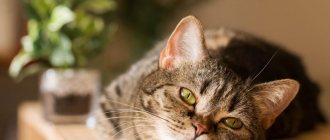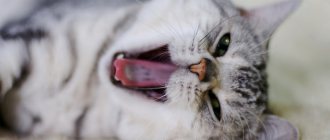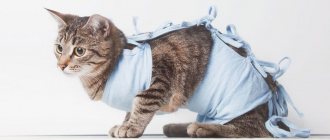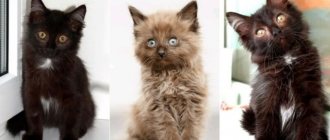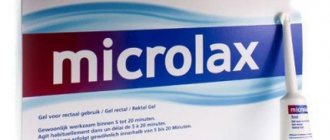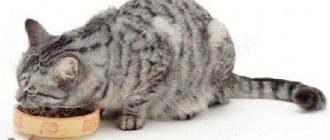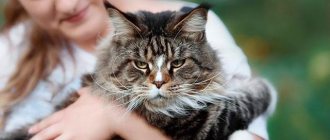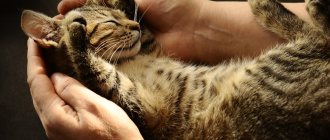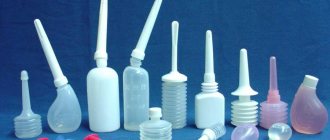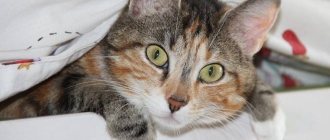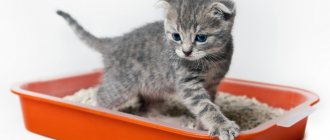To help your pet get rid of obesity, it is important to understand the reason for its development. Sometimes excess weight appears due to illness, and not due to excessive appetite. Methods of losing weight are selected strictly individually and depend on the physiological characteristics of the pet.
However, the veterinarian’s recommendations are always the same. The specialist prescribes the fat man to exercise a lot and eat right. The cat will not be able to follow these recommendations on its own, so the responsibility for maintaining a healthy lifestyle for the pet falls on the shoulders of the person. Not only its appearance, but also its life expectancy depends on this.
Why does a cat need to lose weight?
For each animal there is a weight norm at which they feel great and look beautiful. An extra layer of fat cells increases the load on internal organs, disrupts the functioning of systems, leads to the development of diseases, and increases the risk of complications in existing chronic pathologies. Cats that are overweight or obese move little, do not play, lead a passive lifestyle, age faster, and live less. An animal needs to lose weight for itself and its owner. To prevent pathological transformations, diseases, play, run, lead a full life.
The causes of obesity are:
- type 2 diabetes mellitus;
- violation of metabolic processes;
- heart diseases;
- arthritis, osteoarthritis;
- high blood pressure;
- sore joints;
- oncology;
- hormonal imbalance;
- poor nutrition;
- sedentary lifestyle.
It is worth noting that wild cats practically do not suffer from excess weight or obesity, and they get sick less. Pets move little, eat artificial food, and are sterilized, so their lifestyle can hardly be called healthy or life fulfilling. To avoid health problems for your pet, the owner must make every effort. Fat cats suffer from various diseases, have problems with blood vessels and muscles.
All about obesity in cats
From the very first days of a cat's appearance in the house, the owner must provide his pet with the right diet and sufficient physical activity. Controlling the amount of food consumed is an important task, because extra pounds significantly shorten the life of a mustache.
Why does an animal become overweight?
A cat becomes fat when it eats more food than it needs. Thus, the fluffy one consumes a lot of extra calories, which it cannot expend within the apartment. During adolescence, when children and teenagers are very active and play a lot, overeating does not affect appearance. However, over the years, excessive appetite leads to an increase in body fat and ultimately to obesity.
An excellent appetite is not always the reason for weight gain. Some disorders in the body lead to the accumulation of extra pounds. Typically this is:
- diabetes mellitus type II;
- metabolic disorders;
- diseases of the cardiovascular system;
- arthrosis and arthritis;
- oncological diseases;
- high blood pressure;
- disruptions in the hormonal system;
- castration or sterilization operations performed at a late age;
- incorrectly selected diet;
- disorders in the gastrointestinal tract.
Wild and even domestic felines rarely suffer from excess weight, so they get sick less often. Domestic individuals usually lead a sedentary lifestyle, and obtain food without making any effort. A sedentary lifestyle can hardly be called healthy, which is why most fat people suffer from various ailments.
Why is obesity dangerous?
Veterinarians report that more than a third of all pet whiskers suffer from excess weight. Cats get too carried away with tasty treats and begin to gain extra pounds. The consequences of this can be dire because they provoke the development of serious health problems. The most common of them are:
- joint diseases;
- liver problems;
- pathologies of the cardiovascular system;
- high blood pressure;
- dangerous neoplasms;
- diabetes.
Excessive weight prevents your pet from leading an active lifestyle, running with other animals, and playing. The fat guy doesn’t want to get up from the couch, and even small physical activity causes him shortness of breath and discomfort. All this negatively affects the physical condition of the pet and leads to a shortening of its life.
How to determine if your pet's weight is outside the normal range
On average, the weight of an adult varies from 3 to 6 kg. Males are usually 1-2 kilograms heavier than females of the same breed.
In general, weight gain is influenced by various factors. The main ones include gender and breed, type of feeding, heredity, and general physical condition. For example, the normal weight of large species can reach 8-10 kg. This is considered the norm.
Signs that your pet is overeating should be cause for concern. His stomach begins to sag and his waist disappears. If you pick up the animal, you can easily feel the fat layer. But the ribs, pelvic bones and spine, on the contrary, cannot be found by touch.
Obesity changes the appearance of the mustache and leaves it with a lot of inconvenience. The fat man's gait changes, he begins to waddle and loses his former grace.
Weight norm and obesity
The average weight of an adult cat is 3-6 kg. Males always weigh 1-2 kg more than females of their breed. The main factors influencing body weight:
- floor;
- activity;
- Lifestyle;
- genetic factors;
- health status;
- food – quality, type;
- breed.
Small breeds weigh from 2.5 to 4.5 kg, medium – 5-8 kg, large – up to 8 kg. After castration, the cat may begin to gain weight, so she needs to be given special food or put on a diet. If it is not possible to accurately measure your pet's weight, you can determine fatness by appearance.
Dystrophy, underweight:
- the spine protrudes, the pelvic bones are easily palpable and visible to the naked eye;
- shriveled muscles;
- there is no fat layer on the chest;
- sunken belly.
Normal weight:
- the pelvic bones, spine, ribs are palpated, but not prominent or visible;
- the proportions are correct;
- the belly does not sag;
- the waist stands out.
Overweight:
- the stomach sags;
- noticeable fat layer;
- no waist;
- The ribs, pelvic bones, and spine cannot be felt.
If a cat has a deviation of at least 1 kg, this is already a reason to contact a specialist. A veterinarian can calculate the ideal weight for a particular pet. Obesity not only changes the appearance of the animal, but also disrupts the functioning of internal organs and systems. Obesity in cats is much more common than in cats. This is due to hormones.
How long will my cat have to be on the diet?
Most cats reach their ideal weight within 6 to 8 months. If the process is delayed, then something needs to be changed. Healthy weight loss is about a pound per month. Some cats take longer, while others lose weight faster.
For most cats, the secret to effective weight loss is attentive and responsible owners. Cats don't understand that obesity is killing them. We, as good owners, must protect them from danger and, of course, not unwittingly contribute to their development of serious illnesses or their premature death.
Only by working closely with your veterinarian and your entire family can you ensure that your cat remains fit and healthy.
The recommendations are based on the work of veterinarian Ernest Ward.
Risk factors
Weight gain results from the deposition of fat cells. In most cases, this is due to low physical activity and poor diet.
There are also other risk factors:
- Age . Over time, physical activity decreases and metabolic processes are disrupted. Replenishing energy requires less energy. If the cat continues to eat as usual, the extra calories turn into fat cells and weight increases.
- Breed . The tendency to obesity manifests itself in some cat breeds at the genetic level. If you do not adhere to dietary nutrition, the animal begins to gain weight. Mixed breeds are prone to obesity.
- Floor . Cats are more prone to gaining excess weight due to hormonal changes. Although at the genetic level, cats of the same breed always weigh a couple of kilograms more.
- Diseases . Sometimes obesity becomes a consequence of pathological metabolic disorders, hormonal imbalance, diseases of internal organs and systems. Diabetes mellitus promotes the deposition of fat cells.
- Castration, sterilization . After the operation, animals are no longer able to reproduce. On the one hand, this is very convenient for the owners, on the other, it increases the risk of developing diseases. Side effects include weight gain due to hormonal imbalance.
- Overfeeding, overeating . Cats that have free access to food tend to overeat. In addition, many artificial foods contain flavoring additives, large amounts of salt and fat, and therefore very often cause obesity. When feeding natural food “from the table”, the likelihood of weight gain also increases. Foods that are healthy for people are not always healthy for cats. The components are not digested, metabolic processes are hampered, and fat cells are deposited.
- Insufficient physical activity . In the wild, cats lead an active lifestyle, constantly hunting and climbing trees. In apartment conditions, animals practically do not move, so calories are quickly stored in fat.
Signs of obesity are excess weight, difficulty walking, shortness of breath, slow movement, drowsiness, apathy, bad mood.
How to consolidate the result, or prevention of obesity
Constant physical activity and an adjusted diet will help you maintain your weight loss results and prevent weight gain in the future. It is important for a four-legged couch potato to provide sufficient area for outdoor games. You can make shelves that the cat will use for jumping, or purchase/make a play complex with your own hands.
We must not forget about various toys that attract adults no less than kittens. Ringing, fluffy, rustling objects interest cats, causing them to stir and move. You should not carry your mustachioed friend in your arms - encourage him to move around the apartment or house. Only the owner’s persistence and patience will help maintain normal weight and health of the pet.
Extra pounds on your furry friend is a serious problem that is dangerous to ignore. Obesity leads to serious health problems, and in advanced cases, death. Only a veterinarian can select the appropriate food and give recommendations on physical activity. The owner’s task is to follow the recommendations and monitor the pet’s health.
The article is for informational purposes only. Contact your veterinarian!
First stage
To get rid of excess weight, you need to reduce your calorie intake and increase your calorie expenditure. In theory everything is simple, in reality it is more complicated. The owner can choose the right diet for the pet, but making it move more is problematic. In general, you should not put your cat on a strict diet. Physiologically, an animal’s body is structured differently from that of a human or a dog. A fast for 2 days leads to the development of a fatal disease - liver lipidosis or fatty hepatosis.
It is very important to choose the right diet with the right amount of calories. The presence of serious diseases should also be excluded. If obesity is caused by diabetes mellitus or hormonal imbalance, a regular diet will not help, additional special medications are needed. The best option is to take your pet to a specialist and get advice.
Consequences of obesity
Obesity causes increased stress on the skeleton and internal organs of the animal, which causes the body to wear out faster. Due to pain in the joints and bones, the animal moves less, which further aggravates the situation.
Due to obesity, the number of fat cells that feed the blood increases, which means there are more blood vessels, and at the same time the load on the heart increases. Problems with the cardiovascular system begin, which can lead to heart failure or stroke.
Obesity increases the load on the kidneys, which can cause kidney failure and urolithiasis. Obesity in cats often leads to diabetes mellitus, which may well lead to blindness of the animal. The liver is also susceptible to obesity. This may lead to her refusal. According to statistics, obese cats live 2-3 years less than their thinner counterparts.
How to feed a cat to make it lose weight
The normal weight of an adult cat should be 3.6 – 4.4 kg. But, if the animal’s body weight is 8 kg, it is impossible to quickly lose kilograms. The intermediate weight will be 6.8 kg. After this is achieved, they again turn to specialists. It is necessary to assess the pet’s health status and decide on the advisability of continuing the diet.
The weight loss program includes several important aspects:
- Feeding frequency
Free access to food contributes to excess weight gain. The cat, out of idleness, eats everything that is on its plate, the number of calories is not controlled, and obesity develops. You need to feed your pet 2-4 times a day. The serving size should be equal to one average mouse.
- Diet reduction
A rapid reduction in calories and a change in diet leads to the development of fatty hepatosis, which can be fatal. You need to reduce calories gradually, by 20-30% per week. It is considered normal if a cat loses no more than 2% of its body weight per week.
- Dry food, carbohydrates
Many owners choose ready-made dry food and canned food as the main food for their pets. The packages indicate the daily portion, feeding recommendations, as well as the beneficial properties of the contents. However, in practice everything is not so simple. The feed contains a large amount of cereals - carbohydrates, and relatively little protein. With regular consumption of food, the amount of carbohydrates increases, which are converted into fat cells. With prolonged feeding on dry food, diabetes and obesity develop. The correct portion is calculated taking into account the cat’s physical activity, physique, and individual characteristics.
- Treats
There is no need to buy special treats for cats. They contain flavorings, taste enhancers, after which the appetite increases even more. It is not healthy to feed your pets sweets from the table. The animal's internal organs are not able to process sweets properly. As a result, they all turn into fats and disrupt digestion. During the diet, treats should be excluded. As soon as the weight is normalized, it is allowed to treat the cat with pieces of chicken and fish.
Natural sources of food are mice and birds. They consist of protein, fat, and a small amount of carbohydrates. Animals get energy from protein and fat; carbohydrates can be completely excluded from the diet. In this case, food is considered optimal if it consists of 50% protein, 40% fat, 10% carbohydrates.
Weight loss program for fat cats
It is developed by a veterinarian if the cat does not need treatment for a systemic disease. In this case, the main directions of the weight loss plan will be a gradual change in diet and increased physical activity. Usually, doctors determine the cat’s ideal weight and an intermediate weight to which he first needs to lose weight. After all, rapid loss of body weight will only harm the health of the purr.
Examination by a veterinarian
Dietary recommendations for cats
Most often, veterinarians recommend that owners of fat cats change their pet’s food or reduce portions. You need to act gradually so as not to cause stress in the animal. Doctors advise adding a quarter of the new food to the main food in the first days, then gradually increasing its ratio in the bowl.
How long it takes to accustom a cat to a diet depends on how quickly it gets used to healthy food, but on average it takes a couple of weeks.
After the cat completely switches to the new diet, it should be weighed every week to record whether there are any positive changes. If at first the weight decreased, but then the process stalled, this is normal. Continue to feed your pet according to the new scheme, and when the “plateau” is overcome, the weight will go down again. But if there are no results within a month, you need to adjust your diet together with your veterinarian.
The new food needs to be slowly mixed with the old one so that the animal gets used to it.
Feeding frequency
Sometimes, for a cat to return to its previous form, it is enough to change its diet: remove bowls of food from constant free access. Domestic cats need to be given food four times a day in small portions - the size of an average mouse.
You will have to get used to the new diet
Reducing caloric intake
Portions should be reduced gradually so that the animal does not suffer from stress. If you are wondering how to make a fat cat lose weight, you cannot keep it on a starvation diet - it will get sick. The maximum that an animal can lose is 2% of its own weight. To achieve this, the overall diet is reduced by an average of 15% or food with a reduced calorie content is chosen. In the latter case, you can focus on average indicators for how much you need to reduce caloric intake if the cat moves very little.
Low-calorie food for adult cats
The volume of breakfast, lunch and dinner is gradually reduced
Table 1. Daily kilocalorie intake to achieve the cat's ideal weight.
| Required body weight, kg | Calorie content of food per day, Kcal |
| 3,5 | 180 |
| 4,5 | 210 |
| 5,5 | 230 |
For larger cats, the average caloric intake of a diet that will lead to weight loss can be calculated using the formula: 80%x(70x(required weight)x¾). This calculation is an average; figures may vary depending on the breed.
Correct menu
Natural food for small cats is birds and mice. That is, almost completely protein. And dry food usually contains a lot of carbohydrates from grains. This contributes to weight gain and the development of diabetes. In order for a cat to lose weight, it needs to be fed either a ready-made high-protein, expensive formula, or an analogue of natural food.
In an optimal cat menu, proteins, fats and carbohydrates should be approximately in the following proportion: 5:3:2.
But when switching to a diet close to natural, you cannot give the cat only meat. But it must be there. Preferably low-fat varieties: turkey, chicken, rabbit. Additionally, the diet includes:
- low-fat boiled fish;
- cereals without steam treatment;
- low-fat dairy products.
Be sure to supplement your diet with vitamins as recommended by your veterinarian. You should not salt your cat's food. Your pet should have fresh water available at all times.
Protein foods are the basis of the diet
Healthy “snacks”
If you want to please your pet and reward him for good behavior, you should not treat him with store-bought treats or sausage. Such products contain additives and flavorings that are not very healthy and increase appetite. And some store-bought “snacks” are even addictive. It is better to treat your pet with a slice of boiled chicken or fish without spices.
Cats should not eat human food, especially if they are losing weight.
Increase physical activity
Cats are predatory animals, but they hunt from ambush and are not inclined to travel long distances to chase or track prey. And at home, when there is no need to hunt, they become completely lazy. They spend most of the day in blissful bliss and gain extra pounds.
Important! Physical activity is extremely important for effective weight loss - it speeds up calorie burning and metabolism.
Cat "fitness"
It is incredibly difficult to distract a fat cat from his nap. But underneath the layer of fat lies a wild and brave hunter. You just need to remind your pet about this. The main way to get your cat to move more is to play with it. Various devices help with this:
- laser pointers;
- interactive mice;
- various balls;
- squeaker toys.
Even a piece of paper on a string or a simple ball can interest a cat. But you will have to constantly come up with something new - cats do not tolerate monotony, and one single ball will quickly get boring.
Kids are the best “trainers” of fat cats
The best “fitness trainer” for a cat is a preschooler. The baby will be happy to bother the sloth and come up with a variety of fun games.
Additional loads
There are a few more tricks on how to make an overweight cat lose weight:
- Placing a bowl of food away from its usual place so that the cat still has to take a walk “to hunt.” In this case, the bowl must be removed after eating, and at the next meal, moved to a neighboring place a little further away. Otherwise, the fat man will settle down to rest next to the feeding area.
- Buying an unusual feeder so that the sloth has to sweat before getting food. But it should not be an automatic feeder in which food is always available.
- Purchasing toys that you can put dry food inside. It is also quite difficult to get.
Don't let your sloth relax near your bowl
You can come up with any tricks to make a fat cat move and lose weight. There are even special animal gyms where cats lose weight under the guidance of trainers. If there is one nearby and you have the means, why not buy your pet a subscription.
Weight loss formula
Based on energy requirements during periods of absolute rest. The value is designated as PEPP. Calorie content is calculated as follows:
- 70 x (ideal weight in kg) x ¾;
- 30 x (total weight in kilograms) + 70.
To lose weight per day, the cat must receive 80% of the PEPP. In addition, there is a ready-made table from which you can compare the values.
- 3.6 kg – 180 kcal;
- 4.5 kg – 210 kcal;
- 5.4 kg – 230 kcal.
The calculations are approximate; the exact number of calories needed for a particular animal to lose weight should be calculated by a specialist. The rate of daily kilocalorie consumption directly depends on the body weight of the animal.
How often should you re-weigh?
Once you have developed a plan for how to lose weight for a cat in such and such a time, with your help, it is very important to understand whether it is effective.
Each cat is unique, and the recommended diet may require several adjustments before you see results. On average, a cat should be weighed every month until it reaches its ideal weight. If there is no result within a month (weight loss of about half a kilo), the program needs to be adjusted. Sometimes even a small change is enough.
Which food to choose
Since cats are obligate carnivores, they require a special diet rich in proteins. It is necessary to reduce the amount of fat consumed and eliminate carbohydrates. In simple terms, cats should be given fermented milk products, meat, fish, eggs, and not given cereals, porridge, or potatoes. Include small amounts of vegetables in your diet. Eliminate sugar, salt.
To avoid constantly counting calories, many manufacturers produce special dietary products. It contains a minimal amount of carbohydrates and virtually no fat. The main diet is proteins. However, such products are more expensive than regular ones. When choosing cat food, you should pay special attention to the composition. The dietary product should not contain flavor enhancers, flavorings, or flavoring additives.
The main food is dry products, canned food is additional food that you can refuse during the diet. Domestic and foreign manufacturers produce special products. Particularly popular are:
- 4 TYPES OF MEAT WITH BROWN RICE INDOOR (DRY LOW GRAIN HOLISTIC FOOD WITH LIVE PROBIOTICS);
- CLUB 4 PAWS PREMIUM “WITH RABBIT IN JELLY”;
- DRY FOOD FOR ADULT CATS PRONATURE ORIGINAL CHICKEN;
- FELIX FELIX SPIDER BEEF JELLY 100 g;
- GIMPET CRISPY BITS DENTAL MEAT BALLS FOR TEETH 40 g;
- GIMPET MEATY SNACKS CHICKEN 35 g;
- GIMPET SHINY CAT TUNA SHRIMP;
- Cat food Blitz “Poultry”, “Chicken”, “Turkey”.
You need to choose a low-calorie, high-quality product. Food is freely available at any veterinary pharmacy or specialty store. If desired, you can order online.
Treatment and diet
How can a cat lose weight? At the first sign of excess weight in a cat, you should contact a veterinarian. The doctor will examine the animal. If obesity is the result of internal problems in the cat’s body, the veterinarian will make a diagnosis and then prescribe treatment. The animal may have to be given injections and switched to special food. Often, treatment for cat obesity involves diet and increasing his activity. It is necessary to monitor the cat’s weight and record all changes. If your weight does not change, you need to see your doctor again.
Often, overweight animals are prescribed a special diet. However, this does not mean that your pet needs to be starved. The animal needs to be fed on a schedule, and not left food freely available all day. In order to reduce the volume of the stomach, food should be given more often, but in smaller portions. After eating, leftovers must be removed until the next time.
The animal must not be fed from the table. The cat's diet must contain meat, vegetables and cereals in the proportions specified by the veterinarian. Fish can be given only once a week, as it can cause the development of urolithiasis. In no case should the diet contain potatoes and rice, which contain a lot of starch. During the diet, you need to reduce the calorie content of food: exclude fatty chicken and beef. You can give chicken fillet, turkey, lean beef. It is necessary to temporarily remove fatty dairy products from your diet. In this case, kefir, low-fat yogurt, and cottage cheese will be useful. Vegetables include carrots, turnips and pumpkin.
How long does it take to train a cat to go on a diet?
It all depends on how radically different dietary nutrition is from regular nutrition. If you make a transition from dry food to natural food, it will take at least 2 weeks for the animal to get used to it. It is recommended to accustom your pet gradually by replacing high-calorie dry food with dietary food. Initially, 1 part of the new food is added to the regular food. After 3 days the share is increased. They completely switch to new food after 14 days. To improve the taste, it is allowed to heat the feed, grind it, and season it with fish oil.
How to determine excess weight
To understand whether a cat is overweight, you just need to touch it. In a healthy woman, the ribs and spine can be felt. The stomach is taut.
If the weight is increased in relation to the average for age, sex and breed, it is by less than 20%. It is the weight that the animal was at one year of age that is the best. It should be supported.
Symptoms of excess weight are as follows:
- fat on the sides;
- saggy belly , there may be a thick fold of fat below;
- lack of waist;
- resemblance to a soccer ball;
- inability to palpate the ribs or difficulty in doing so;
- soft, fat-covered sternum;
- fat layer along the spine.
The last two symptoms indicate obesity, a more severe form of excess weight.
If your cat starts to look like a soccer ball, this indicates weight problems.
Different breeds may have their own anatomical features.
For example, Persians have a round body, while Siamese are rather lean. It is better to consult a veterinarian about the ideal weight for a purebred cat. He will examine the animal and may conduct tests.
In a cat, excess weight adds stress to her body, which leads to arthritis, liver and heart diseases, and diabetes. It is even harder for an old lady with arthritis to walk, especially if she is obese. Also, anesthesia has a more severe effect on overweight dogs.
How to get yourself moving more
You cannot take your cat with you on your morning jog. This behavior is not typical for an animal. Cats are ambush predators who, by nature, do not move very much, wait for prey in ambush, and rarely go beyond the boundaries of their own territory. If necessary, they give chase at their maximum speed, but the duration of the run is no more than 1 minute. After this, the predator needs a lot of time to recuperate.
A domestic cat is a copy of a wild cat, but even more immobilized. Making an adult pet tumble, run after a ball, and fatten up is problematic. Moreover, if the animal has led a sedentary lifestyle for several years. In addition, breed and character traits play an important role. Some cats simply don’t tend to frolic, roll up rugs, or chase a target.
To reduce the number of calories and reduce the accumulation of fat cells, you can do the following:
- tease your pet, forcing him to chase a toy or ball;
- do gymnastics;
- use special toys that stimulate the cat’s activity;
- install feeders with slots;
- create barriers to access to the bowl of food, for example, place it on a platform higher than usual, then the pet will have to strain;
- make a cut in a plastic bottle, put food there, the cat will be forced to roll the “feeder” to get to the food;
- install a running wheel for cats.
Pets who have the opportunity to go outside suffer less from obesity because they move more. If possible, you need to start taking your pet for walks. Cats do the most primitive exercises for losing weight - legs to the sides, up.
Prevention
To restore water balance and replenish resources after physical activity, a cat needs to drink a lot. The Drinkwell 360 automatic drinker will help with this. It holds about two liters of water, which, thanks to its system, circulates intensively. The output is crystal clear and fresh water, beneficial for the body.
There are a few simple rules that will help prevent your beloved mustache from becoming overweight:
- Along with appearance, obesity affects internal organs. A problem like this indicates that your friend’s life is shortening. Fatty masses envelop the internal organs and increase the load on the joints and heart. Pay attention to the quality of the food you give. It is better to spend money and live with a healthy and active cat than to feed it to obesity and disease, spending even more. Do not mix or alternate natural and dry food. Make a meal schedule and feed strictly according to it. If your cat follows you around and demands dinner at an untimely time, remain persistent and do not give in to provocations. In a week he will get used to it and won’t beg.
- Don't try to pay off with food. Whiskers, like all pets, require attention, and you should give it. Don’t think that giving him an extra piece of sausage will replace rubbing his tummy.
- Do not prohibit active games. The pet must be provided with a sufficient amount of exercise. After all, by their nature they are predators and must hunt for food. He may now be a domestic lump, but he has instincts. Watching a sunbeam, playing with a ball or restlessly running around the house is a kind of hunt. Take part in the games, it will be useful for the cat and you yourself will get a boost of positivity by watching the jumping hunter.
- Change the diet if your pet has undergone sterilization surgery. Such animals require a special diet.
As you can see, preventing obesity is not at all difficult. But if this happens, you must definitely find a way to help your cat lose weight. Don't start with a solution to the problem, you'll only make it worse. Be sure to go for a consultation with a doctor who will tell you how to properly and painlessly return your cat to its former shape.
Show patience, attention and care to your full-eared cat, and together you can achieve results.
Useful tips
In order to quickly achieve the desired goal, normalize your pet’s weight, you need to devote maximum time to it and adhere to certain rules.
- Place the bowl of food in different places so that it is not so easy to get to. Some fat cats prefer to sleep close to the plate so as not to have to walk too far. We need to force them to do this.
- Buy a special ball-feeder, inside of which you should put a certain portion of dry food. To get it you need to work hard, roll the ball in different directions.
- Every day you need to spend at least 15 minutes playing with your cat. They use various teasers - a laser, a sunbeam, feathers, a string with a toy at the end, foil balls, etc.
- Buy squeaky toys. Cats like to carry them, chew them, and roll them on the floor. You need to do something to entice your pet. When you get tired of one toy, they offer another.
There is no single correct mechanism of action. Each pet is individual, only the owner knows its abilities, preferences, interests, and temperament. You need to be a little smart to get your cat to move and enjoy it.
How to get back into shape?
The Georplast Vertigo track is one of the best toys for cats to lose weight quickly and effectively. The track promotes active recreation and also involves almost all muscle groups of the animal. The principle of the toy is that the cat chases the ball along a certain trajectory. You won’t be able to get the ball, but it will take a lot of calories!
The main mistake owners make is that they think that if they don’t give food at all, the cat will quickly lose weight. This is wrong! Such actions will lead to stomach diseases.
You must understand that the pet will not return to its former shape as quickly as it gained weight. Approaching its ideal, the cat will need more time to lose those hated pounds. The correct diet is prescribed by a veterinarian after examination and examination. The diet should be varied, do not give only porridge or only meat. It is necessary to switch to a diet for cats with obesity:
- switching to less fatty meat;
- not fatty boiled fish;
- cereals that were not amenable to steam treatment;
- exclusion of animal fats and introduction of vegetable fats;
- low-fat dairy products;
- vitamins;
- exclude the presence of salt and seasonings.
If your pet eats dry food, you should change it to specialized food. Pet stores provide a large selection of dietary food for obese cats.
Each product in a cat’s diet should be easily digestible and have a suitable calorie content. For an overweight cat, the volume of the feeder should be reduced by 1/4, and feed him three times a day. There are also specially designed cat diets.
You need to remind your cat that he can be active and it will be fun. This does not mean that you should chase your pet around all day without letting him sit. Sudden activity will cause great harm. Increase the load gradually, starting with 20 minutes of games a day. Get the necessary toys: mice, fishing rods for cats, balls. And if you have the finances, then purchase a special structure in the form of a tree, a wall or a pyramid. You can climb on it and sharpen your claws. If the cat is interested, he will be ready to run and jump for hours.
Important: Record changes in weight each week and report them to your veterinarian. This will help monitor the cat’s condition and change the components of the diet.
Answers to popular questions
When losing weight in animals, owners have many questions. Answers to the most common ones are presented below.
- How to feed other cats if only one needs to lose weight?
There are several options. You can place plates in different rooms, add different types of food, and then clean everything up. Or, for a skinny cat, place a bowl of food on a high place where a fat cat cannot reach. In general, adherence to a diet is recommended for all sterilized pets, not only those who are overweight, so everyone can be put on proper nutrition at once. Some to normalize weight, others to prevent obesity.
- How long will my cat have to be on the diet?
It all depends on the efforts of the owner, additional actions, the individual characteristics of the animal, the initial weight, and the desired result. On a diet, a cat loses approximately 500 g per month. In most cases, it takes 6-8 months to achieve your ideal weight. However, it should be borne in mind that after leaving the diet, the pet may gain extra pounds again. In some cases, pets need to be kept on a diet constantly. In addition, it is more difficult for a cat to lose weight after sterilization than for a cat. Therefore, many factors are taken into account.
- What to do if your cat is constantly begging for food?
To control excess weight, as well as to normalize body weight, it is very important to adhere to the regime. If a cat constantly asks for food, this does not mean that it is hungry. In most cases, food is perceived as signs of attention, therefore, in order to calm the animal, you can pick it up, stroke it, and talk to it. If the cat does not calm down, put a couple of pieces of food in a plate or pour water. Another option for restless pets is to feed more often, but less. The daily dose is divided into several doses.
- How to lose weight for a cat naturally?
A cat's diet can consist not only of special food, but also natural products. In order for your pet to start losing extra pounds, you need to eliminate carbohydrates from the diet and reduce the amount of fat. The main diet will consist of protein. Products are selected individually based on tolerance. They give beef, chicken, fish, eggs, low-fat cottage cheese, yogurt. It is much easier to buy special food for cats prone to obesity, but natural food will be healthier.
A well-fed cat needs to lose weight in order to improve its health, prevent serious diseases, and prolong its life. Before taking your pet for surgery, you need to remember that it is much more difficult for a castrated or sterilized cat to lose weight, so you need to feed the animals correctly right away, and not wait until they become overweight.
What to do if your cat is constantly begging for food?
When cats wake us up at four in the morning, demanding food, screaming like crazy, or non-stop poking their foreheads at their owner, we give up. The cats have trained us well, they know very well which buttons to press to get what they want! Here are some tips for pacifying annoying Persians or irrepressible Siamese:
- Do not use automatic feeders. It is quite obvious that the automatic feeder for the fat tailed man is a machine filled to the brim with candies.
- Pet your cat or play with her when she begs for food. Many cats perceive food as equivalent to their owner's attention, and you may find over time that play replaces the cat's meal.
- Feed your animal in smaller portions, but more often, so you can provide a late dinner for a cat who likes to wake you up in the morning. Divide your total calories into four to six small portions. The most important thing is not to give your cat food in excess of the prescribed amount.
- If the bowl is empty and the cat won't calm down, put a couple of pieces of food in the bowl. A couple of pieces, not a handful.
- Offer your cat fresh water instead of food. When your cat is persistently staring at an empty bowl, a sip of fresh, cold water can curb her appetite.
Where does excess weight come from in a pet?
Losing weight is difficult for both humans and cats - especially for sterilized animals
And initially, it is very important for the pet owner to monitor the pet’s diet and control the amount of food consumed. Indeed, in addition to diseases, obesity can significantly shorten the life of an animal
A cat becomes fat if it eats more than it needs. That is, he consumes calories above the norm. During the first years of its life, a cat consumes a lot of food instinctively because it is growing and it needs it. At the same time, small cats are still very active and playful, so they are not at risk of obesity. But what if their appetite does not decrease over the years, but only grows? Add to this the decrease in activity in the adult and you get a combination like a lazy fat cat. Spayed and neutered cats are especially lazy and gluttonous, so they are more prone to obesity.
Increasing physical activity
It is very important for obese cats to increase physical activity
The fat one must move.
Movement is necessary for losing weight. She does not need to suffer either on the treadmill or in cat aerobics classes.
The best gymnastics for Murka is her favorite sport - hunting. So you should awaken the hunter's instincts in the cat.
To do this, you will need a piece of paper folded like an accordion on a string, which can be held either directly in your hand or on a stick “fishing rod” for cats. These animals love to chase such a toy, powered by the owner's hand.
If the animal does not want to chase such a toy, you can take it to the country or simply release it into the yard, where the animal will run and lose fat.
There is also another way: you can put one or two toys in each room, filling them with pieces of dry food taken from the bowl. Let your pet work to get some food. At the same time he will have fun.
Well, the third method: put the bowl in a different place each time (you can repeat it, but don’t put it twice in a row in the same place), and so that the animal has to work with its paws to get to the food.
You can place a bowl of food in different places to encourage your cat to be active.
These animals have good brains. If the cat understands that its “dining room” is on top, it will often go up there and then wait there for the next portion.
If she likes a certain place, place the bowl of food away from there. Many fat cats prefer to rest close to the bowl because they do not like to travel long distances for food.
Cats like variety. That’s why it’s best to change toys and entertainment so that you don’t get tired of them.
Other digestive and body problems
It is worth noting that not only obesity can pose a danger to the animal. If a cat has lost a lot of weight, this means that he has serious health problems. It is worth paying attention to this, because exhaustion, like obesity, can be fatal.
If the cat does not eat anything and has lost weight, other symptoms of the disease should be noted. Perhaps the new food is simply not suitable for the animal. It is worth remembering that it is necessary to change food gradually, slowly increasing the amount of new and decreasing the amount of old. In addition, there is a possibility that the new food is simply not suitable for your pet. In this case, it should be replaced with another one.
